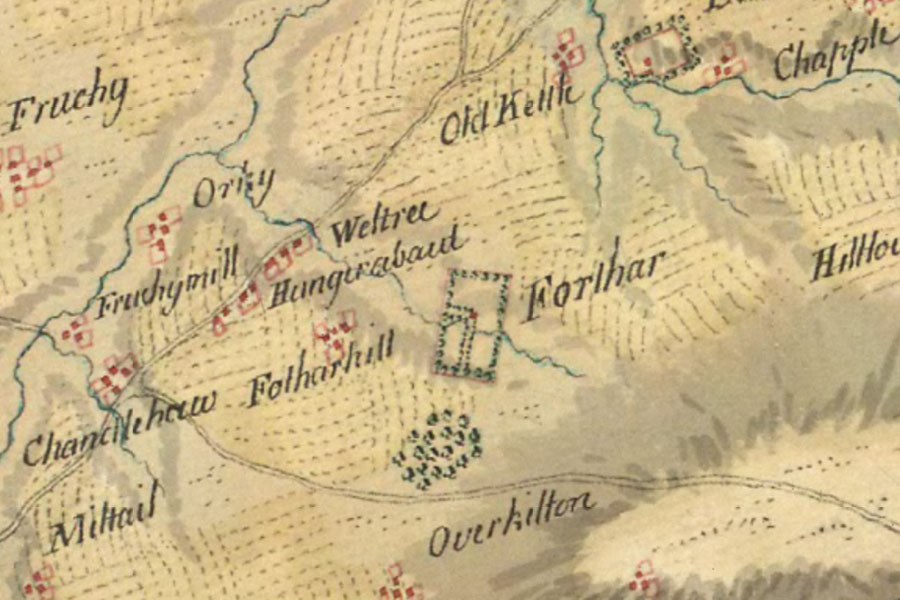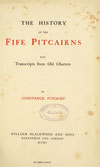

William Roy, 1747-1752
Forthar Castle stood on the land now occupied by East Forthar farm, however nothing of it now remains.
Little is known about Forthar, but in the mid-15th century it was owned by the Ramsay family. In 1456 or 1460 Elizabeth Ramsay, described as the heiress of Forthar, married Henry Pitcarne or Pitcairn and they assumed the name Pitcairn of Forther-Ramsay to distinguish themselves from the main branch Pitcairn of Pitcairn or Pitcairn of that Ilk. From the next generation they were known as Pitcairn of Forther but their coat of arms combined those of Ramsay and Pitcairn.
A royal charter dated the 27th of January 1551 confirms the sale of “the lands of Forthir, with tower, fortalice, manors, gardens, and orchards, the lands of Dunfeild, with tower, fortalice, manors, gardens, and orchards” by David Pitcairn in favour of his son Robert, later the Commendator of Dunfermline and Archdeacon of St Andrews.
Another charter, dated the 26th of July 1634, refers to “the lands and barony of Forthar, and the lands of Pitcairn, with towers”. A now roofless doocot on the edge of a field to the north of East Forthar farmhouse is thought to be 17th century in date and is likely to be associated with the castle.
On James Gordon’s map from 1642 Forthar is marked as a notable building.

James Gordon, 1642
Forthar also appears as a substantial building on John Adair’s map which was published in 1684.

John Adair, 1684
The lands of Forthar were forfeited following the Jacobite Rising of 1745 and the house appears on Roy’s map at the centre of an extensive designed garden landscape.
However in 1756 Dr Stuart Threipland of Fingask, whose aunt had married Alexander Pitcairn, 18th laird of Forthar, in 1676, bought the estate from the government on behalf of Dr William Pitcairn, a second cousin of the former laird. Threipland was physician-in-chief to Bonnie Prince Charlie during the Rising and Pitcairn was President of the Royal College of Physicians in London from 1775 to 1784.
In 1830 William Pitcairn’s heir and nephew, Dr David Pitcairn, sold Forthar to the Balfours of Balbirnie. When the painter Constance Pitcairn visited Forthar, either in the late 19th or early 20th centuries, the house at Forthar was apparently a ruin, which she painted. The current farmhouse at Forthar is 19th century in date and the site of the castle is now lost.
Alternative names for Forthar
East Forthar; Forther; Forthir











